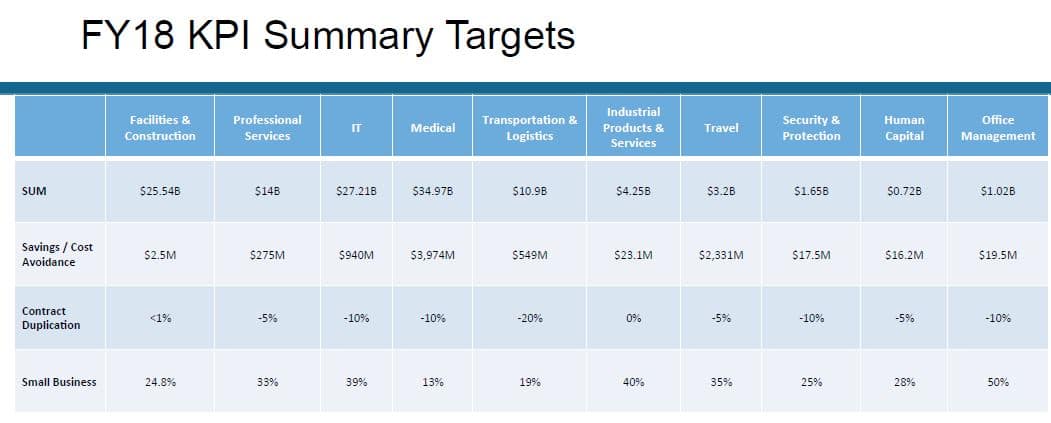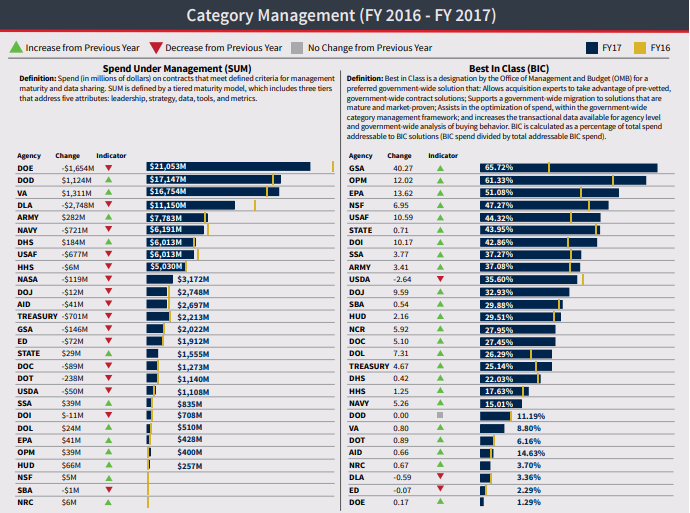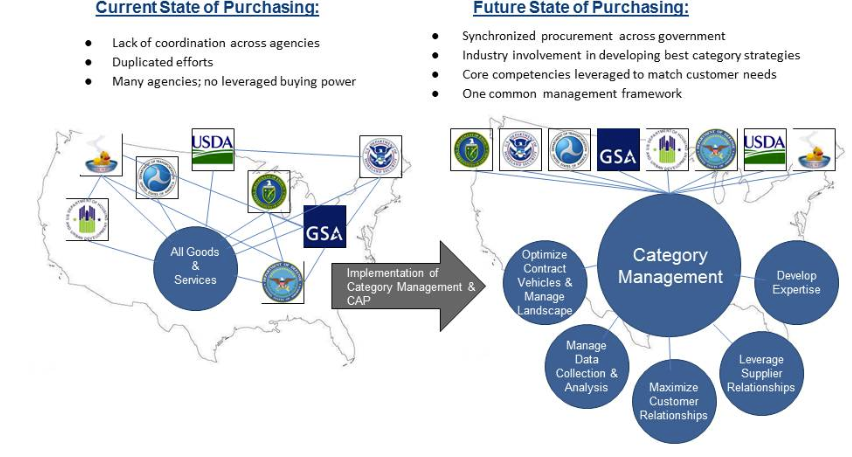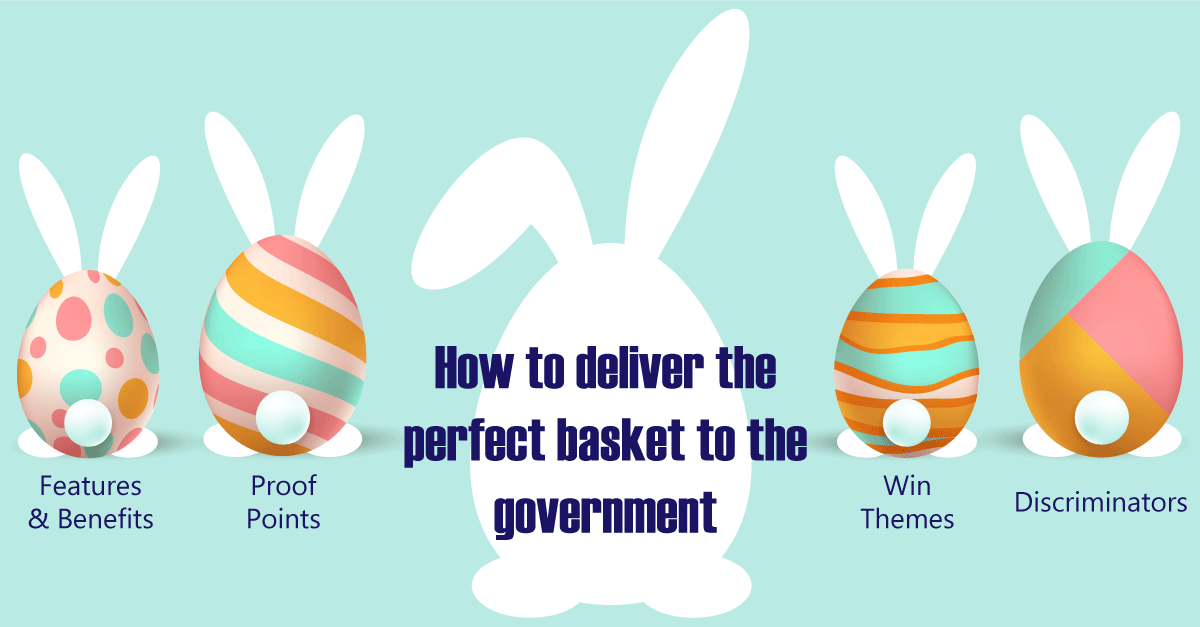In September 2016, I set off to explore unanswered questions regarding Category Management in our Category Management article series. Initial questions were:
1. What is Category Management?
2. What are the pitfalls and upswings of Category Management for Government contractors?
3. What does Category Management have to do with me the Business Development professional?
In my final post, in early 2017, I asked the question – “will this new Administration reject Category Management all together ?” – an outcome industry assumed was all but guaranteed. And as we have all learned with the Trump administration, nothing is for certain and not only have they not given up on Category Management – they are doubling down.
SO WHERE IS CATEGORY MANAGEMENT NOW?
Category Management is alive and well and seems to be thriving. Since our last blog post, there has been a lot of movement in regards to the policy and implementation to Category Management. Here's what government contractors need to know:
New Identified Best-In-Class (BICs) Contracts
Since late 2017, GSA has added two new BIC’s to its list of 30+ already identified contracts. The first being High-Tech Medical Equipment (HTME) which was designated in March 2018. The second, Enterprise Infrastructure Solutions (EIS), was just recently added in April 2018. Here are some details on the newbies:
 FIGURE 1. NEW IDENTIFIED BEST-IN-CLASS CONTRACTS.
FIGURE 1. NEW IDENTIFIED BEST-IN-CLASS CONTRACTS.
The “BIC” title means the contract is officially preferred by OMB because it provides robust, pre-vetted solutions applicable across federal agencies, according to GSA. It also means that the contract adheres to Category Management regulations.
Major Push for the Reduction of Duplicative Contracts by 2020
In the third version of the Category Management Strategic Plan, each OFPP Category Manager detailed their 2018 and 2019 goals for each of the ten categories, including a 5% to 20% reduction in the number of contracts that serve each specific area.
 FIGURE 2. CONTRACT DUPLICATION AND ELIMINATION GOALS (SOURCED FROM FEDERAL NEWS RADIO)
FIGURE 2. CONTRACT DUPLICATION AND ELIMINATION GOALS (SOURCED FROM FEDERAL NEWS RADIO)In summary, the aim is to eliminate 13% of the 425,000 contracts under what OFPP calls “Tier 0” or duplicative or “unnecessary” contracts that they deem do not conform to category management principles. Lesley Field, the acting OFPP, stated that “Agencies are held accountable for meeting the targets for BIC and spend under management (SUM)” in an email to Federal News Radio – but still no details yet on how they will hold Agencies accountable.
President’s Management Agenda Supporting Category Management
The President’s 2018 Management Agenda aimed high with broad goals to include IT modernization, reshaping of the Federal workforce, and reorganizing the Government. A majority of the agenda was a reiteration of what we have heard out of this Administration since day one as it covered 14 cross-agency priority (CAP) areas of transformation. One of these priority areas of transformation being Category Management.
Sitting at #7 on the CAP list, the Administration intends to leverage Category Management to continue to create common contracts so they can be leveraged to drive savings and efficiencies stating that “by 2020, the Government will achieve $18B in savings for taxpayers by applying Category Management principals […] [and] through best value contract solutions – to 60% of common spend.”
SEEN IMPACTS OF CATEGORY MANAGEMENT
The Government Contracting community, primarily Small Businesses, seem to be concerned over the speed of trajectory of Category Management and rightfully so. The main point of concern is the identified BICs which contain a majority of “large business-focused” vehicles with extended periods of performance and no opportunity to on-ramp. A Small Business Subcontracting Plan (SBSP) can only get you so far. Outside of Small Businesses, the Government Contracting community as a whole has already seen the consequences of the re-energized Category Management initiative with impacts such as:
Strong Encouragement in the Use of BIC’s.
In addition to the details above, the OFPP will be pushing Federal Agencies to target at least 30% use of BICs from now until at least 2020. Consequences of Feds not using BICs or reaching this 30% target currently remain unknown.

Consolidation. Not just of Contracts, but of Offices.
In February, the GSA merged the Unified Shared Services Management office and the Office of Executive Councils to form the Office of Shared Solutions and Performance Improvement. This was done “to make acquisition more innovative.”
Implementation of New Frameworks.
The Technology Business Management (TBM) Framework, an established private sector practice, is now being applied to Federal IT spending and operations. This framework mirrors the Presidents 2018 management agenda referenced above and is supposed to provide greater transparency of IT spending by standardizing the data taxonomy across the Federal IT enterprise. According to some industry news sources, the Government believes this new framework could save $5.8B in Federal IT spending.
Major Policy Updates.
Back in January 2018, GSA finalized a major policy change to the Multiple Award Schedules (MAS) program which would allow adding order level materials or other direct costs (ODCs) to the IT Schedule (IT 70) or Professional Services Schedule (PSS) – both identified BIC’s. This new feature is still in the works though as each schedule has to be updated in accordance with their own policies and procedures. If GSA can get this tool to Contracting Officers before the end of FY18, the impact will be significant.
For additional impacts and success stories of Category Management, make sure to read the “CM Monthly Outcomes Report ” and the “CM Success Stories ” documents found on Acquisition Gateway.
HOW TO ADJUST TO CATEGORY MANAGEMENT AS A GOVERNMENT CONTRACTOR
 FIGURE 3. THE END GOAL OF CATEGORY MANAGEMENT – CURRENT TO FUTURE STATE OF FEDERAL GOVERNMENT PURCHASING (SOURCED FROM GOVERNMENT-WIDE CATEGORY MANAGEMENT GUIDANCE DOCUMENT)
FIGURE 3. THE END GOAL OF CATEGORY MANAGEMENT – CURRENT TO FUTURE STATE OF FEDERAL GOVERNMENT PURCHASING (SOURCED FROM GOVERNMENT-WIDE CATEGORY MANAGEMENT GUIDANCE DOCUMENT)The impact of contract of contract consolidation (Category Management), while necessary, has major impacts on the entire contracting community. So how can you continue to remain responsive to this initiative while still bringing in revenue? Well here are some suggestions:
- Begin a dialogue with your primary contracting offices to learn about the potential impacts and if your contracts meet the criteria.
- Leverage and market your GSA Schedules during the last two quarters of this fiscal year. A majority of the BIC GWAC’s and BPA’s have locked on-ramp periods so contracting offices will be looking for additional options.
- If you are not on a GSA Schedule - start the process now. If you are having a hard time deciding which ones to target, I would recommend Schedule 70 or the Professional Services Schedule (Schedule PSS)
- If you are in the services industry, identify competitive Category Management opportunities and bid on the RFP when it becomes available.
Time will tell what the further implications of Category Management will be, and we’ll be watching!








